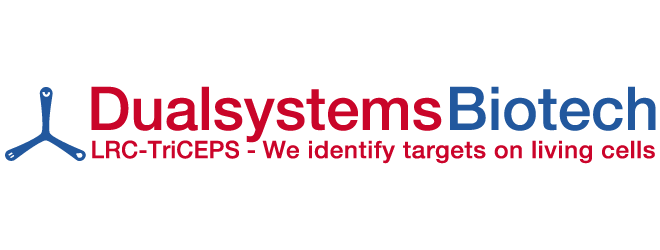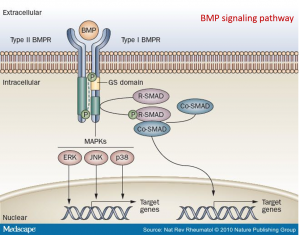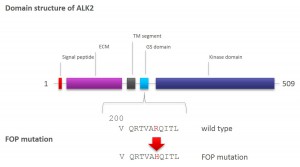Introduction to Fibrodysplasia ossificans progressiva (FOP)
- In 2006, a landmark study showed that a point mutation in the ALK2 receptor is linked to FOP (Shore et al., 2006)
- ACVR1/ALK2 is part of the family of type I BMP receptors (BMPRs)
- BMPRs play a crucial role in bone formation during development
- The study suggests that the identified ALK2 R206H mutation leads to receptor hyperactivation
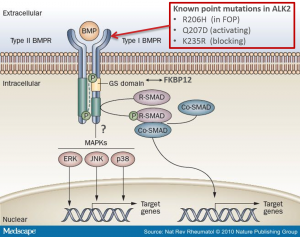
The GS- domain of ALK2
- Structurally defined element within the intracellular part of ALK2
- Located between the transmembrane segment and the kinase domain of ALK2
- The GS domain interacts with various intracellular proteins, which form part of the signaling cascade
- GS domain interactors include Smad proteins and FKBP12
ALK2 hyperactivation hypothesis
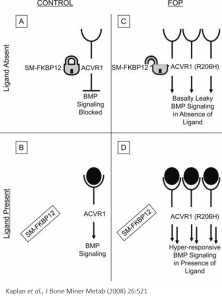
Unanswered questions around the activation of the ALK2 R206H mutant
- Does the R206H mutation change the interaction pattern of ALK2?
- Which components of the signal cascade are affected?
- Can these interactions be identified using a proteomics approach?
- Do these changed interaction patterns shed any light on the disease mechanism of FOP?
Aim of the study
- Identification of ALK2 interacting proteins using two proteomics approaches
- Use of two different cellular model systems, Hek293 cells and U2OS cells
- Investigation of differences in the interaction patterns of ALK2 wild type and ALK2 R206H
- Visualization using the network software Cytoscape
- Identification of possible novel targets for treatment of FOP
